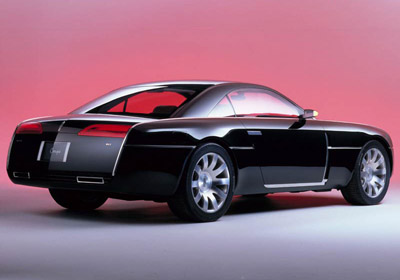|
|
|---|
Thursday, January 29, 2009
72mpg from a Toyota iQ
Living up to manufacturer's fuel efficiency claims is something that cars generally struggle to do. There are exceptions to every rule however, and the Toyota iQ has become one of those exceptions with a small team managing to go 504.2 miles on 32 litres of petrol. This equates to 72mpg, when Toyota officially quote 65.7mpg. They managed to visit 19 British cities along the way. The half-way blog post is here and the start of the challenge is here. If the petrol iQ is capable of this much, one must wonder how much a diesel model could achieve...
This shows what can be achieved not only by Toyota's impressive little city car, but also by careful driving technique. Doubtless many cars are capable of matching their claimed economy figures, but potentially hampered by the person behind the wheel.
This shows what can be achieved not only by Toyota's impressive little city car, but also by careful driving technique. Doubtless many cars are capable of matching their claimed economy figures, but potentially hampered by the person behind the wheel.
Labels:
eco,
fuel economy,
hypermiling,
iq,
toyota
Wednesday, January 28, 2009
House Proposes Plug-In Hybrid Tax Credits
In its version of the Obama economic stimulus package, the House of Representatives has included a disappearing tax credit for plug-in hybrid cars, similar to the confusing disappearing tax credit for non-plug in gasoline hybrid cars.
The credit consists of $2,500 per passenger car, plus $417 for each kWh of battery capacity over the first 4 kWh. The credit is limited to $7,500 for a vehicle with GVW less than 10,000lbs, but does increase to $10,000 for a vehicle with GVW up to 14,000lbs, and up to $15,000 for vehicles with GVW up to 26,000lbs.
The credit will start to phase out 3 months after 250,000 plug-in hybrids have been sold in the U.S., dropping to 50% for the next 6 months, then 25% for the next 6 months, and then going away completely.
So, for example, the Chevy Volt with its claimed 16 kWh battery would qualify for $2,500 + 12 * $417 = $7,500 (what a coincidence!)
The credit consists of $2,500 per passenger car, plus $417 for each kWh of battery capacity over the first 4 kWh. The credit is limited to $7,500 for a vehicle with GVW less than 10,000lbs, but does increase to $10,000 for a vehicle with GVW up to 14,000lbs, and up to $15,000 for vehicles with GVW up to 26,000lbs.
The credit will start to phase out 3 months after 250,000 plug-in hybrids have been sold in the U.S., dropping to 50% for the next 6 months, then 25% for the next 6 months, and then going away completely.
So, for example, the Chevy Volt with its claimed 16 kWh battery would qualify for $2,500 + 12 * $417 = $7,500 (what a coincidence!)
SEC. 205. CREDIT FOR NEW QUALIFIED PLUG-IN ELECTRIC DRIVE MOTOR VEHICLES. (a) Plug-in Electric Drive Motor Vehicle Credit- Subpart B of part IV of subchapter A of chapter 1 (relating to other credits) is amended by adding at the end the following new section:
`SEC. 30D. NEW QUALIFIED PLUG-IN ELECTRIC DRIVE MOTOR VEHICLES. `(a) Allowance of Credit-
`(1) IN GENERAL- There shall be allowed as a credit against the tax imposed by this chapter for the taxable year an amount equal to the applicable amount with respect to each new qualified plug-in electric drive motor vehicle placed in service by the taxpayer during the taxable year.
`(2) APPLICABLE AMOUNT- For purposes of paragraph (1), the applicable amount is sum of--
`(A) $2,500, plus
`(B) $417 for each kilowatt hour of traction battery capacity in excess of 4 kilowatt hours.
`(b) Limitations-
`(1) LIMITATION BASED ON WEIGHT- The amount of the credit allowed under subsection (a) by reason of subsection (a)(2) shall not exceed--
`(A) $7,500, in the case of any new qualified plug-in electric drive motor vehicle with a gross vehicle weight rating of not more than 10,000 pounds,
`(B) $10,000, in the case of any new qualified plug-in electric drive motor vehicle with a gross vehicle weight rating of more than 10,000 pounds but not more than 14,000 pounds,
`(C) $12,500, in the case of any new qualified plug-in electric drive motor vehicle with a gross vehicle weight rating of more than 14,000 pounds but not more than 26,000 pounds, and
`(D) $15,000, in the case of any new qualified plug-in electric drive motor vehicle with a gross vehicle weight rating of more than 26,000 pounds.
`(2) LIMITATION ON NUMBER OF PASSENGER VEHICLES AND LIGHT TRUCKS ELIGIBLE FOR CREDIT-
`(A) IN GENERAL- In the case of a new qualified plug-in electric drive motor vehicle sold during the phaseout period, only the applicable percentage of the credit otherwise allowable under subsection (a) shall be allowed.
`(B) PHASEOUT PERIOD- For purposes of this subsection, the phaseout period is the period beginning with the second calendar quarter following the calendar quarter which includes the first date on which the total number of such new qualified plug-in electric drive motor vehicles sold for use in the United States after December 31, 2008, is at least 250,000.
`(C) APPLICABLE PERCENTAGE- For purposes of subparagraph (A), the applicable percentage is--
`(i) 50 percent for the first 2 calendar quarters of the phaseout period,
`(ii) 25 percent for the 3d and 4th calendar quarters of the phaseout period, and
`(iii) 0 percent for each calendar quarter thereafter.
`(D) CONTROLLED GROUPS- Rules similar to the rules of section 30B(f)(4) shall apply for purposes of this subsection.
`(c) New Qualified Plug-in Electric Drive Motor Vehicle- For purposes of this section, the term `new qualified plug-in electric drive motor vehicle' means a motor vehicle--
`(1) which draws propulsion using a traction battery with at least 4 kilowatt hours of capacity,
`(2) which uses an offboard source of energy to recharge such battery,
`(3) which, in the case of a passenger vehicle or light truck which has a gross vehicle weight rating of not more than 8,500 pounds, has received a certificate of conformity under the Clean Air Act and meets or exceeds the equivalent qualifying California low emission vehicle standard under section 243(e)(2) of the Clean Air Act for that make and model year, and
`(A) in the case of a vehicle having a gross vehicle weight rating of 6,000 pounds or less, the Bin 5 Tier II emission standard established in regulations prescribed by the Administrator of the Environmental Protection Agency under section 202(i) of the Clean Air Act for that make and model year vehicle, and
`(B) in the case of a vehicle having a gross vehicle weight rating of more than 6,000 pounds but not more than 8,500 pounds, the Bin 8 Tier II emission standard which is so established,
`(4) the original use of which commences with the taxpayer,
`(5) which is acquired for use or lease by the taxpayer and not for resale, and
`(6) which is made by a manufacturer.
AUTOSAR lecture
I have been asked by prof. Martin Törngren if I could be a guest lecturer in a course about AUTOSAR at the Royal Institute of Technology.
Sounds really interesting, since I hope to also participate in other parts of the course besides my own lectures. But it is also challenging since the first occasion is already on 9-10 February and I have no material prepared. I need to discuss this with my supervisor before I make a commitment.
Sounds really interesting, since I hope to also participate in other parts of the course besides my own lectures. But it is also challenging since the first occasion is already on 9-10 February and I have no material prepared. I need to discuss this with my supervisor before I make a commitment.
Labels:
Automotive software,
AUTOSAR,
My presentations,
My teaching
Architecting Systems with UML 2.0
The best (and shortest) introduction to UML 2.0 from an architect's viewpoint is an article called Architecting Systems with UML 2.0 by Morgan Björkander and Cris Kobryn.
Obviously you need to know the basics of UML 1.0...
Obviously you need to know the basics of UML 1.0...
Monday, January 26, 2009
Saturday, January 24, 2009
Friday, January 23, 2009
Subscribe to:
Comments (Atom)



























































